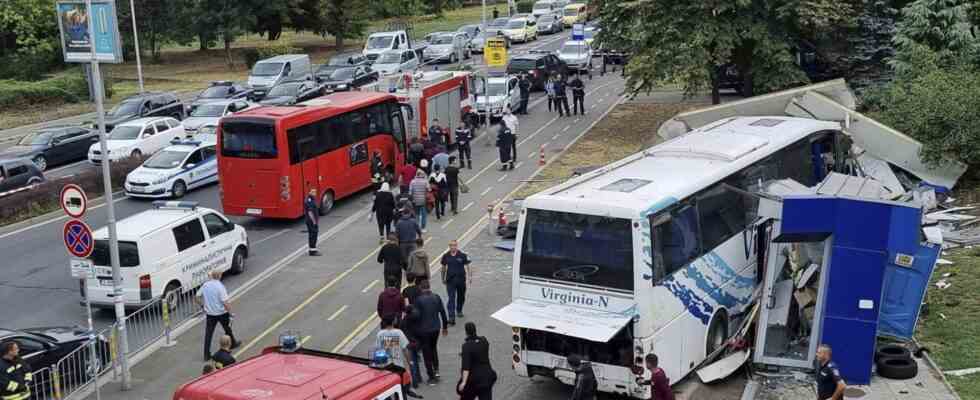report
Status: 09/23/2022 3:39 p.m
The number of migrants trying to reach the EU is increasing on the Balkan route. Trafficking organizations are becoming increasingly aggressive – and this sometimes leads to fatal accidents.
A boy with thick brown hair, shaved behind, stands next to the chain-link fence of a large Bulgarian refugee camp. Mahmoud is 17 and arrived alone in Bulgaria a few months ago. His family is there now, they want to apply for asylum and then go on to Germany.
The way to Bulgaria was dangerous, says Mahmoud, pointing to the fence behind him, which reminds him of the Turkish-Bulgarian border fence. He climbed over it with a ladder and then jumped – “like from the 4th floor. Then I kept walking.”
Something is brewing on the Turkish-Bulgarian border, he says, and now a lot of people have gathered there. Some are fleeing the war in Syria, others are fleeing the hard life in Turkey, he explains.
Reckless smugglers are making the Balkan route ever more dangerous for refugees
Anna Tillack, ARD Vienna, daily topics 9:45 p.m., September 23, 2022
Bulgaria relies on strict border protection
Bulgaria relies on tough border protection and deterrence, the government has increased the number of border guards and is already planning a further increase. According to the Bulgarian Interior Ministry, the number of attempted border crossings has doubled to 103,000 since the previous year.
The pressure on the limits increases – and with it the stress level of everyone involved. Every few days there are serious accidents on the Balkan route. In the center of Burgas, near the Turkish border, a bus carrying 47 migrants engaged in a deadly chase with police. The two vehicles collided, little was left of the police car after the collision, both police officers died. The driver, an 18-year-old Syrian, was arrested.
Deadly end of a chase: In Burgas, police and rescue workers secure the place where a police car and a towing bus collided.
Image: AP
Attempted border crossings also in Serbia
Almost 600 kilometers further north in Subotica, Serbia, there is a lot of activity, and there is a nervous tension in the air. Everything here is waiting for the border crossing to Hungary, the Hungarian high-security border fence is only a few kilometers away.
Refugees are on the road in small groups, getting out of taxis, camping in meadows or in abandoned buildings. The state admissions system has long since been completely overwhelmed.
Camping in a ruin: The destination of these migrants in Serbian Subotica is Hungary.
Image: ARD Vienna
Expensive and risky escape
A young man from Yemen is staying in one of the ruins. He walked the route via Egypt to Greece, he reports. Then he paid a smuggler for 3,000 euros to get to Serbia. You can’t cross the border alone, he says. You sit in jeeps, stuffed with people, with him there were a total of 15. Of course there are accidents.
Exactly such an accident happened in mid-September in Burgenland on the Austro-Hungarian border. The military wanted to stop a vehicle to inspect it. The driver accelerated, went off the road and crashed into a tree. In the car, approved for seven people, there were 16 passengers from India, Pakistan and Afghanistan in addition to the Romanian driver.
Helmut Marban from the Burgenland police sees a new, worrying trend: there are currently many young men on the road who have been recruited by the organizations, “who are very aggressive and ruthless on their route and also have no regard for the lives of those who are being dragged – and the young men often risk their own lives”.
Rearmament at the border: This fence in Hungary is intended to deter migrants trying to enter the country from Serbia.
Image: ARD Vienna
deterrence and stress
This year, the Burgenland police arrested 205 people smugglers, 36 more than last year. The number of asylum applications has also increased.
The Austrian migration expert Judith Kohlenberger sees the reasons for the increase in numbers in the geopolitical situation on the one hand, and secondary effects from the Russian war of aggression in Ukraine on the other.
However, the increased number of refugees also left its mark on the people smugglers: they noticed how migration rhetoric was changing. According to Kohlenberger, deterrence at the borders also leads to stress at the borders.
You can also see this and other reports in the daily topics – at 9.45 p.m. in the first.

